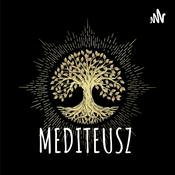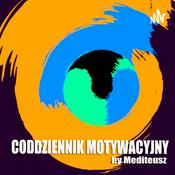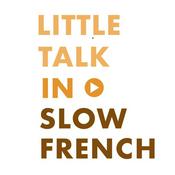236 odcinków

Announcement: The History of the Germans Tour is on!
30.12.2025 | 2 min.
Hello friends of the History of the Germans. Great news, the tour is on!We have set up a website where you can sign up. I have put a link in the show notes, as well as on my website History of the Germans in the Travel, maps and Books section. Sign up here: History of the Germans Podcast Tour - BikePlanetWe will be travelling on the passenger ship Iris, a converted classic Rhine barge. Travelling by boat is - unsurprisingly - one of my favourite ways to see the world. We do not have to get in and out of hotels, we have breakfast and dinner in spectacular scenery and can see the sights as most travellers did before the invention of the motorcar. Note that Iris has capacity for only 25 passengers in double cabins, so speed is of the essence.... Should there be more demand than we can fulfil, we will give priority to patrons.So what are we going to do? Subject to the usual caveats, we are planning to meet in Aschaffenburg near Frankfurt and then travel along the Main and Rhine rivers via Frankfurt, Mainz, Eltville, Braubach, Koblenz, Andernach, Remagen to Cologne with a trip up to Aachen. The tour will end in Düsseldorf.

Where To Go in Germany - Part 1
25.12.2025 | 41 min.
As you are still awaiting your presents, mine has already arrived, which is the chance to make this show. Despite all my occasional moaning and groaning about how much work it is, I have never enjoyed anything as much this. Who could have imagined that digging through often dusty books and articles and trying to put together an interesting and compelling narrative together for a discerning audience was that much fun. And the reason I can do all this is you, the listeners and patrons of the History of the Germans Podcast. So thank you, thank you and thank you.Now let’s get to your Christmas present. I had promised you 5 to 10 places I particularly love and that are not on the standard itinerary for a trip to Germany. But when I shortlisted the places I particularly like, I noticed a bit of a pattern. They were all within a limited range, basically near places I had lived or that have some link to my family. That is human, but not exactly helpful. Because if you want to go to Germany and for some inexplicable reason choose not to spend all your time in either Hamburg or the sunniest, most beautiful and culinarily attractive area that is Baden, then this episode would be profoundly useless to you.I clearly needed some discipline. The plan is now to go through each Bundesland and point out two places, one that is a genuine must-see, and the other a place fewer people go and that is still interesting in its own right. That makes it 32 locations plus 2 bonus ones where I will fully indulge myself by dragging you into deepest Tauberfranken. And I know that still leaves room for enormous bias, in particular when it comes to the larger or richer Lands. But note, this is my Podcast and a choose when I want to.Music: Es ist ein Ros ensprungen (Michael Pretorius, 1609) arranged and performed by Michel Rondeauks15.imslp.org/files/imglnks/usimg/2/29/IMSLP271191-PMLP67213-EsIstEn.mp3

Ep.219 – The Fall of Ghent, or Why There Are No City States No More.
18.12.2025 | 39 min.
The words High and Late Middle Ages conjures up images of fog rising up over a field where knights in shining armor are trading blows with double handed swords, mighty bishops overseeing the construction of monumental cathedrals and peasants toiling on the land as serfs. The reason we see it that way goes back to the chivalric literature that celebrated the aristocratic lifestyle where tournaments and poetry mattered more than the humdrum world of business.But let’s just take a look back at the High Middle Ages, the time of Richard the Lionheart, Saint Louis and Frederick Barbarossa. Who controlled access to the great endeavor of the time, the conquest of the Holy Land? Who re-opened up the connections to the wider world, from Novgorod to India and China? Who were the most ferocious fighters who neither expected norgranted any quarter? Who had all the money?These were the great cities of Italy, of Flanders, of Picardie and Provence and of the Holy Roman Empire. Verona under the Della Scala in the 14th century generated tax revenues twice as high as those of England, Venice capacity was sixty percent of what France could generate. And these cities fielded armies that, as we know, defeated the Holy Roman Emperors, even the most capable ones like Barbarossa and Frederick II time and time again. Their absolute dedication to fight to the end was evidenced by their extremely heavy and slow war carts, the Carroccios and by the bravery of the Flemish Militia at the Battle of the Golden Spurs. And the first European since Roman times to make to India and China wasn’t a Knight errant, but a Venetian merchant, nor were the vast lands on the Eastern side of the continent linked up by military force. The crusades, the grand project of the age was as much a venetian mercantile adventure as a religious pilgrimage, culminating in the sack of Constantinople in 1204. What happened? Where did all these city states go? And why?That is what we are going to discuss today, when we look at the showdown between Maximilian of Habsburg, widower of the last duchess of Burgundy and father of Philip, the universally recognised heir of the Low Countries and the Flemish cities, and specifically its largest, the city of Ghent.The music for the show is Flute Sonata in E-flat major, H.545 by Carl Phillip Emmanuel Bach (or some claim it as BWV 1031 Johann Sebastian Bach) performed and arranged by Michel Rondeau under Common Creative Licence 3.0.As always:Homepage with maps, photos, transcripts and blog: www.historyofthegermans.comIf you wish to support the show go to: Support • History of the Germans PodcastFacebook: @HOTGPod Threads: @history_of_the_germans_podcastBluesky: @hotgpod.bsky.socialInstagram: history_of_the_germansTwitter: @germanshistoryTo make it easier for you to share the podcast, I have created separate playlists for some of the seasons that are set up as individual podcasts....

Ep. 218 – Hedgehogs and Herons, The War that Made the Habsburgs
11.12.2025 | 40 min.
By 1477 the rules of war that had been enshrined in the laws of chivalry are gone. The contest between the French and the Habsburgs over the inheritance of the Grand Dukes of the West gives us a foretaste of the things to come. This war isn’t just fought between the opposing armies lining up for the decisive battle, but include wholesale starving out of the population, funding local uprisings and using propaganda and bribery to incite rebellions on the enemy’s homefront. No one in 15th century Northern Europe is better at this new game than the industrious spider, king Louis XI of France. But a plucky 18-year old Austrian duke who had arrived in Ghent with not much more than the clothes on his back, abundant energy and a budding military genius gave him a run for his huge amounts of money, until tragedy struck. Lots of deception, drama and devastation today…. The music for the show is Flute Sonata in E-flat major, H.545 by Carl Phillip Emmanuel Bach (or some claim it as BWV 1031 Johann Sebastian Bach) performed and arranged by Michel Rondeau under Common Creative Licence 3.0.As always:Homepage with maps, photos, transcripts and blog: www.historyofthegermans.comIf you wish to support the show go to: Support • History of the Germans PodcastFacebook: @HOTGPod Threads: @history_of_the_germans_podcastBluesky: @hotgpod.bsky.socialInstagram: history_of_the_germansTwitter: @germanshistoryTo make it easier for you to share the podcast, I have created separate playlists for some of the seasons that are set up as individual podcasts. they have the exact same episodes as in the History of the Germans, but they may be a helpful device for those who want to concentrate on only one season. So far I have:The OttoniansSalian Emperors and Investiture ControversyFredrick Barbarossa and Early HohenstaufenFrederick II Stupor MundiSaxony and Eastward ExpansionThe Hanseatic LeagueThe Teutonic KnightsThe Holy Roman Empire 1250-1356The Reformation before the...

Ep. 217 – When Mary Met Maxi, the Burgundian Wedding
04.12.2025 | 39 min.
How often have you heard this phrase “Let others wage war; you, happy Austria, marry". It goes back to a whole string of marriages, first Maximilian of Habsburg married the heiress of the duchy of Burgundy, then his son married the heiress of Spain and finally his grandson married the heiress of Hungary and Bohemia. And bish bash bosh, an empire is created in the horizontal.That is nice and neat but not exactly true. Sure the marriages happened, but not in the way at least I have been told. There was a lot more drama and a lot more agency than you think. For a whole six months Maximilian, the Last Knight in his shining armour, left Marie of Burgundy to fend off invasions, revolutions and conspiracies on her own. She was imprisoned, her ministers were hanged and she was told marriage to a 7-year old hunchback was her only wayout. How she managed through that and found herself in the very first truly passionate marriage we have heard about in the History of the Germans Podcast, well, that is what we are talking about today.The music for the show is Flute Sonata in E-flat major, H.545 by Carl Phillip Emmanuel Bach (or some claim it as BWV 1031 Johann Sebastian Bach) performed and arranged by Michel Rondeau under Common Creative Licence 3.0.As always:Homepage with maps, photos, transcripts and blog: www.historyofthegermans.comIf you wish to support the show go to: Support • History of the Germans PodcastFacebook: @HOTGPod Threads: @history_of_the_germans_podcastBluesky: @hotgpod.bsky.socialInstagram: history_of_the_germansTwitter: @germanshistoryTo make it easier for you to share the podcast, I have created separate playlists for some of the seasons that are set up as individual podcasts. they have the exact same episodes as in the History of the Germans, but they may be a helpful device for those who want to concentrate on only one season. So far I have:The OttoniansSalian Emperors and Investiture ControversyFredrick Barbarossa and Early HohenstaufenFrederick II Stupor MundiSaxony and Eastward ExpansionThe Hanseatic LeagueThe Teutonic KnightsThe...
Więcej Edukacja podcastów
Trendy w podcaście Edukacja
O History of the Germans
Słuchaj History of the Germans, Imponderabilia - Karol Paciorek i wielu innych podcastów z całego świata dzięki aplikacji radio.pl

Uzyskaj bezpłatną aplikację radio.pl
- Stacje i podcasty do zakładek
- Strumieniuj przez Wi-Fi lub Bluetooth
- Obsługuje Carplay & Android Auto
- Jeszcze więcej funkcjonalności
Uzyskaj bezpłatną aplikację radio.pl
- Stacje i podcasty do zakładek
- Strumieniuj przez Wi-Fi lub Bluetooth
- Obsługuje Carplay & Android Auto
- Jeszcze więcej funkcjonalności


History of the Germans
pobierz aplikację,
zacznij słuchać.






































